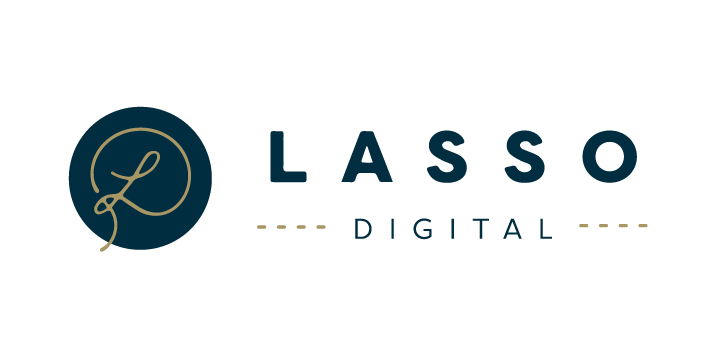
Harnessing the Past to Propel Your Nonprofit Forward
July 16, 2023
[PODCAST] The Power of Social Captial: How Cause Work Can Transform Your Community
July 22, 2023How to Implement a Chart of Accounts for Nonprofits

How to Implement a Chart of Accounts for Nonprofits
The first step is integrating a complete and cohesive Chart of Accounts (COA). The COA actively serves as both an index of account numbers and names and a resource for categorizing all financial activities. In this guide, we’ll walk you through how to implement a chart of accounts for nonprofits into your organization’s financial management.
What is a Chart of Accounts?
A Chart of Accounts actively lists all the accounts a company or nonprofit uses to record financial transactions. We can view it as a map that helps navigate an organization’s financial landscape. Each account in a COA represents a different type of financial transaction, such as revenue, expenses, assets, liabilities, and equity. It generally includes a numbering system for easy identification of each account, and people use it to organize financial data and generate financial statements. By using it, maintaining precise financial records, making data-informed decisions, and adhering to regulatory obligations becomes much easier.
Since nonprofits must comply with specific regulatory requirements, a COA tailored to their activities can help ensure compliance. A well-organized COA provides clarity and transparency around the organization’s financial activities, making it easier for donors to understand how their contributions are being used. Similarly, a COA helps nonprofits make informed decisions, such as identifying cost-effective programs or areas needing cuts.
Steps for Nonprofits to Implement a Chart of Accounts
1. Analyze your organization’s needs and objectives.
Your COA should align with the specific needs of the organization and reflect its unique financial activities. For example, a nonprofit that relies heavily on grant funding may need to create specific accounts to track grant income and expenses. Similarly, an organization that holds regular fundraising events may need accounts to track funds raised and associated expenses.
Questions to ask:
- What financial reports do we need to create?
- What information must our financial reports include?
- What level of detail does each financial report require?
- Are there any specific regulatory and compliance requirements for the reports?
- Will grant reports require specific accounts for separate transaction types?
- How many accounts do we need per financial transaction and what level of detail per account?
- Do we need to track financial information for multiple locations and/or departments?
- How frequently must we generate financial reports and who will use them?
- What are the (KPIs) we need to track and how will they get reported?
2. Define the Chart of Accounts Structure
Establishing the COA structure involves determining the account categories and numbering system to organize financial data. This ensures transactions consistently get recorded and categorized, easing financial management, report generation, and regulatory compliance. Defining the COA structure also ensures that all financial management team members use a uniform system, reducing errors and ensuring accurate reporting. A well-structured chart of accounts for nonprofits is key for organizational success.
Identify Accounts
What accounts are needed for financial reporting? Reporting is critical for nonprofit financial management, and having the right accounts enables accurate reports.
To identify necessary accounts, consider specific reporting requirements like taxes, grants, or other forms.
Decide on the Numbering System
The numbering system should be universally understood as it organizes accounts and transactions, enabling individuals to easily access and use data.
Also, an understandable system ensures consistency in recording and processing transactions, reducing errors, and facilitating reporting. Well-structured numbering helps individuals quickly navigate the chart of accounts.
For example, a numerical sequence like 1000, 2000, 3000 is easy to understand and use. Also, ensure the system is logical and follows a consistent pattern, like grouping similar accounts or reflecting the organizational hierarchy.
Organize Accounts into Categories and Subcategories
When organizing accounts into categories and subcategories in a COA, several approaches can be used:
- By Account Type: Categorize accounts based on type – assets, liabilities, equity, income, expenses. This is common and helps individuals understand the different financial transaction types.
- By Function: Categorize by function – administration, fundraising, program delivery. This shows how resources achieve the mission.
- By Product/Service: Categorize by product or service offered. This shows financial performance of each.
- By Location: Categorize by location of transaction – office, program site. This shows performance by location.
- By Time Period: Categorize by transaction time period – monthly, quarterly, annually. This shows performance over time.

3. Set Up the Chart of Accounts
After covering the bases, it’s time to start building the chart of accounts. Split into Balance Sheet and Profit & Loss categories.
Balance Sheet
The balance sheet provides a financial snapshot. Include:
- Assets: Owned resources that can generate future economic benefits like cash, accounts receivable, inventory, equipment.
- Liabilities: Obligations owed to others like accounts payable, taxes payable.
- Equity: Residual interest in assets after liabilities. Further broken into retained earnings and contributed capital.
Profit & Loss
Shows revenues, expenses, and profit/loss over a period. Also called income statement.
- Revenue: Income from sale of goods or services.
- Cost of Goods Sold: Direct costs of producing/delivering goods/services sold.
- Gross Profit: Revenue minus Cost of Goods Sold.
- Operating Expenses: Normal business costs like rent, salaries, marketing.
- Net Income: Profit or loss after expenses deducted from revenue.
- Other Income and Expenses: Revenues/expenses not related to core operations.
- Implement Tech Stack: Maintain the Chart of Accounts
Ensure the COA integrates with other software like donor management and budgeting/forecasting to maintain consistent data and accurate reporting. Financial information should be accessible to key stakeholders when setting up the chart of accounts. These may include board members, investors, donors, managers, and others needing to understand the financial health and performance.
The COA should have robust reporting processes generating accurate, timely reports designed for easy understanding and customized to each stakeholder group. For example, high-level overview reports for boards and detailed program performance reports for managers.
Should you use QuickBooks or alternative software?
QuickBooks is popular with nonprofits and small businesses for its ease of use. It allows integrating other applications like donor and budgeting software, enabling consistency. QuickBooks can be a great platform for implementing and managing a nonprofit chart of accounts for nonprofits.
When choosing software, consider your nonprofit’s size, transaction complexity, and number of users needing access. Compatibility and required technical expertise also matter. While some options are user-friendly, others less so.

5. Test the COA for Accuracy
Testing the COA accuracy is critical in setup. Conduct a trial balance – a report listing all account balances. It identifies errors like misclassifications, incorrect balances, or inaccurate descriptions. Comparing to financial records verifies COA accuracy and proper reflection of activities.
The setup should include COA training and guidelines for employees on proper account use. This ensures they understand each account’s purpose and proper transaction recording, increasing financial literacy. Employees can then better identify risks/opportunities, make informed decisions, and contribute to financial health.
6. Establish Best Practices for Team
Three COA setup best practices are: don’t delete old accounts, have a process for modifications, and aim for simplicity and consistency.
Rather than deleting, mark old accounts inactive or archived to preserve historical data. This data can provide useful future analysis while maintaining integrity.
Have a process for periodic COA review and modification as needs change over time.
Design for simplicity and consistency – group accounts reflecting activities, develop clear, concise account descriptions accurately reflecting purpose. This improves COA usability and understanding, enabling better financial management and decision making.

7. Monitor COA Use and Compare Budget vs. Actuals
Monitoring COA use and comparing budget to actuals keeps you financially on track. Establish regular meetings to ensure alignment and identify discrepancies. Adjust spending accordingly and make informed financial strategy decisions.
Comparing actuals to budget identifies variances and whether budget or spending adjustments are needed. This information enables informed financial goal decisions.
Remember, monitoring and budget versus actual comparison should be regular routines to achieve financial goals.
Get Started Implementing a Chart of Accounts
In summary, a well-organized chart of accounts (COA) is crucial for accurate reporting and decision-making. To successfully implement a COA, key steps include identifying accounts, creating a numbering system, and establishing hierarchy.
Accounting software can significantly streamline COA maintenance by reducing errors and increasing efficiency. A well-maintained COA enables easy transaction tracking, report generation, and issue identification.
We hope this guide assists in establishing proper financial organization. Please schedule a free consultation if you need assistance. We’re happy to help!
The post How to Implement a Chart of Accounts for Nonprofits appeared first on Nonprofit Hub.
